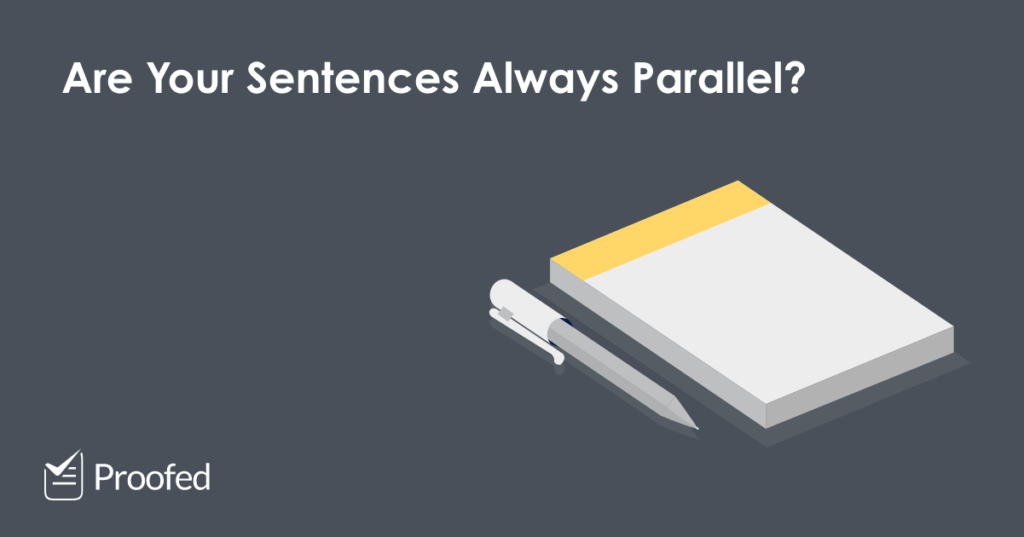Grammatical parallelism sounds complicated, but it’s easier to understand than it might seem. And knowing how parallelism works can help you avoid errors in your writing. In this post, then, we’ll look at the basics of creating a “parallel” sentence and how to avoid faulty parallelism.
What Is Parallelism? (Parallelism and Verb Tense)
A sentence is “parallel” when equivalent parts share a grammatical form. Faulty parallelism, then, occurs when a sentence uses a different structure in different parts. The most common error of this kind tends to involve using two different verb tenses in a single clause. For example:
Marc picks up the hammer and hit the nail.
Here, each verb in the sentence is a different tense “‘picks” = simple present; “hit” = simple past tense). And mixing tenses like this is ungrammatical.
To ensure a parallel construction, we would need a single verb tense:
Present tense: Marc picks up the hammer and hits the nail.
Past tense: Marc picked up the hammer and hit the nail.
Both are now grammatically correct. Not every case of faulty parallelism concerns verb tense, though. And in the rest of this post, we’ll look at other examples of faulty parallelism and how you could fix them.
Faulty Parallelism: Infinitives and Gerunds
Another common error is mixing infinitive verbs (i.e., to + verb) and gerunds (i.e., verbs ending in “-ing” used as a noun) in a single sentence. For instance:
Incorrect: Marc likes to make and repairing furniture.
This is wrong because “to make” is an infinitive verb, while “repairing” is a gerund. To correct this, we’d have to rephrase the sentence using one form:
Infinitives: Marc likes to make and to repair furniture.
Gerunds: Marc likes making and repairing furniture.
It can be easy to miss faulty parallelism like this in lists with multiple items, so make sure to check carefully. Having your work proofread is also a good idea.
Find this useful?
Subscribe to our newsletter and get writing tips from our editors straight to your inbox.
Faulty Parallelism: Nouns, Adverbs and Adjectives
Try not to mix nouns, adverbs and adjectives in descriptions. For example, the following combines a noun (“frustration”) with an adjective (“angry”).
Incorrect: When Marc makes a mistake, he feels frustration and angry.
Both terms follow grammatically from “feels,” so there’s no problem there. Ideally, though, we would use one form in both cases. For example:
Nouns: When Marc makes a mistake, he feels frustration and anger.
Adjectives: When Marc makes a mistake, he feels frustrated and angry.
These are both correct now, since each sentence uses a parallel construction.
Faulty Parallelism: Plural and Singular Nouns
Though this is primarily a stylistic issue, some consider mixing plural and singular nouns a form of faulty parallelism, especially when giving examples:
Incorrect: DIY requires tools, such as a hammer and screwdrivers.
Here, the singular “hammer” is combined with the plural “screwdrivers.” And while we can understand what the sentence means, using the same noun form in both cases would ensure a parallel structure:
Incorrect: DIY requires tools, such as a hammer, drills, and screwdrivers.
Here, for instance, the singular “hammer” is combined with the plurals “drills,” and “screwdrivers.” But it would be better to use the same form for all:
Correct: DIY requires tools, such as hammers, drills, and screwdrivers.
Note, though, that this isn’t the case when one of the nouns listed is an uncountable noun, which can be used alongside plural nouns even though they are typically treated as singular.
